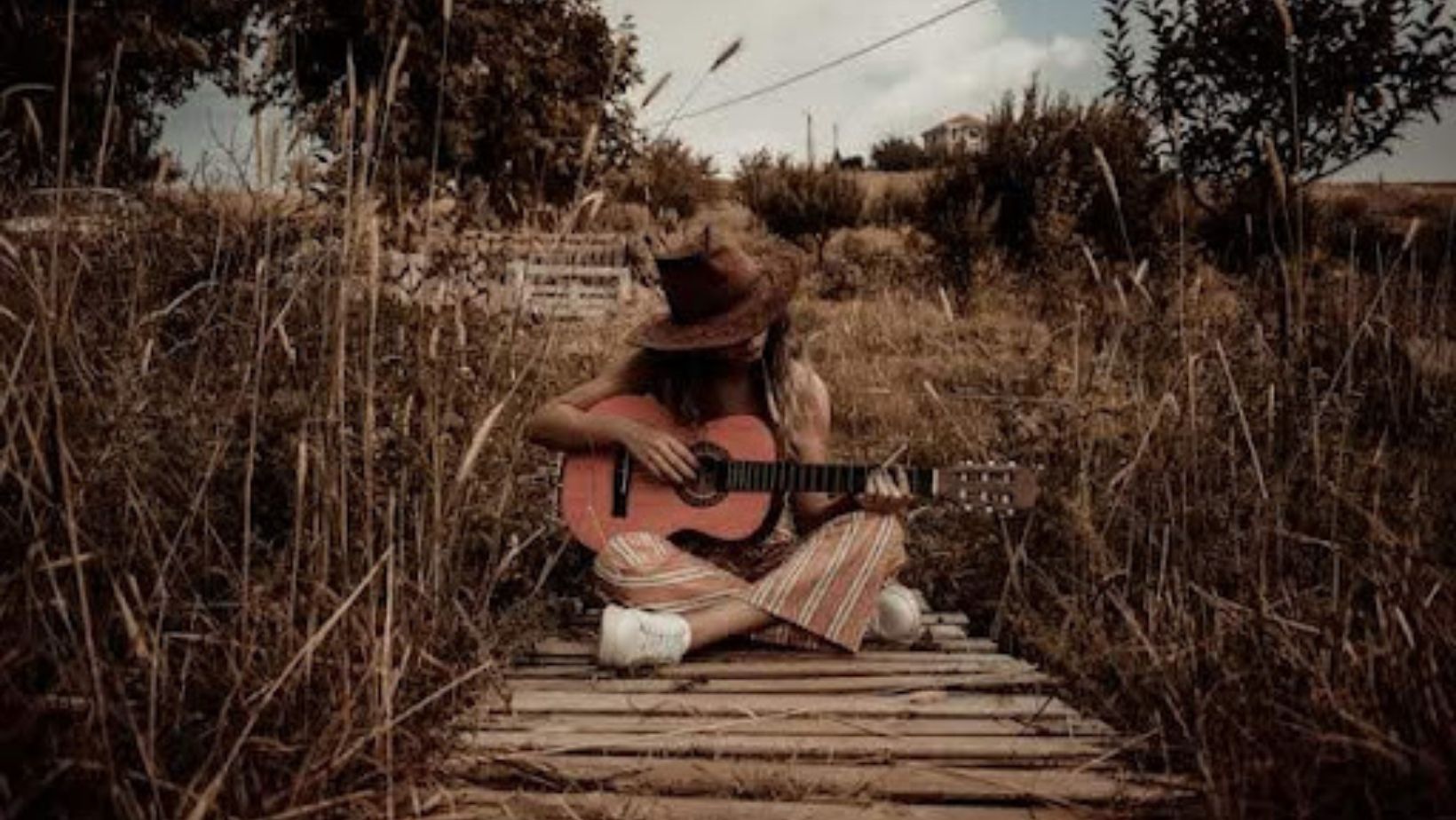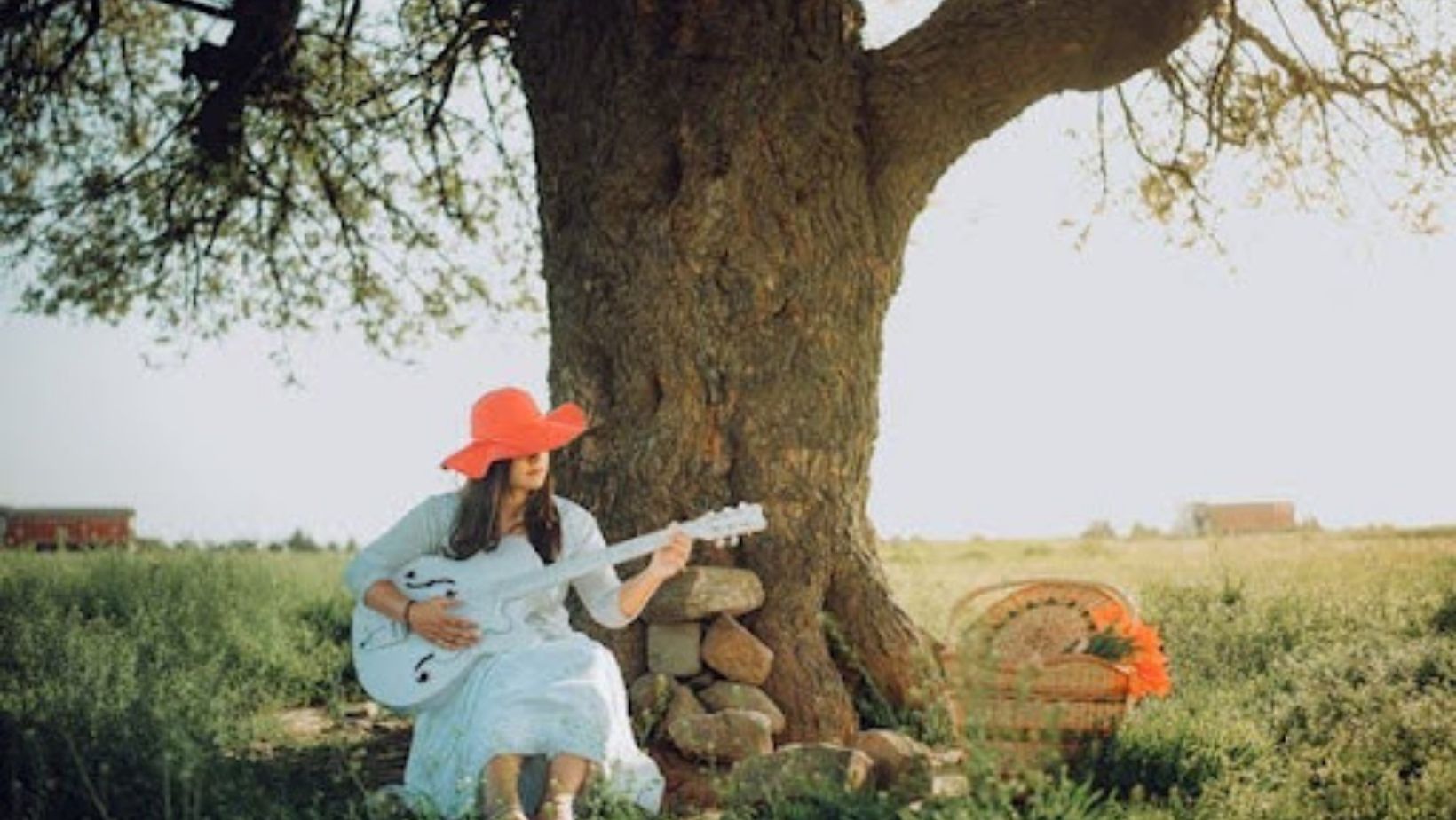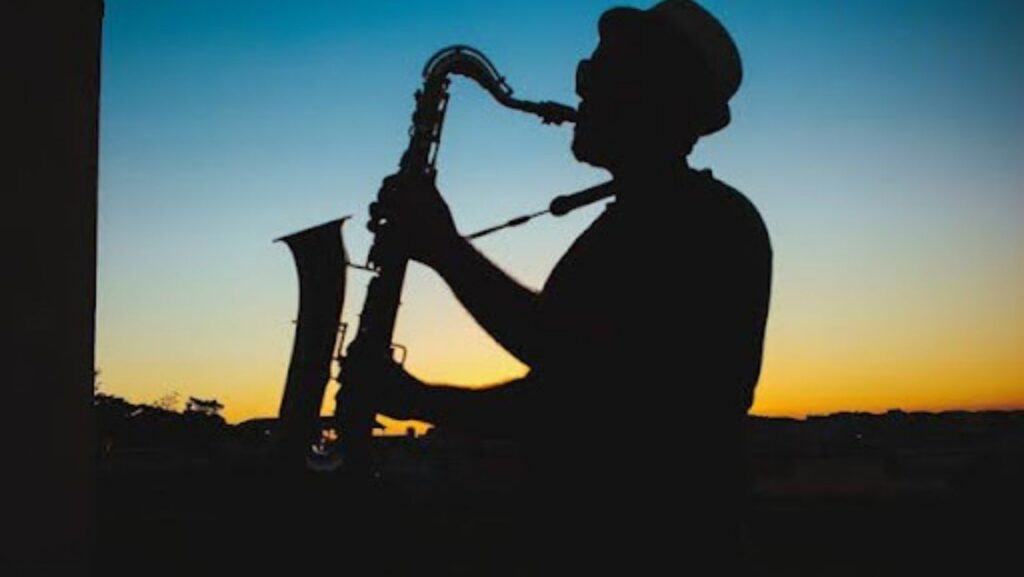In the music world today, how you look matters almost as much as how you sound. Visual branding—like your album cover, profile picture, or even a simple logo—speaks volumes about who you are as an artist. When fans see a striking album cover or a recognizable logo, they start building a connection with your music before they even hit play.
 Social media and streaming platforms make visuals crucial for getting noticed. These days, fans scroll through endless profiles and playlists, and often, the eye-catching visuals make them stop and listen. So, whether you’re just starting or you’ve been at it a while, your visuals can set you apart and create a sense of familiarity with fans.
Social media and streaming platforms make visuals crucial for getting noticed. These days, fans scroll through endless profiles and playlists, and often, the eye-catching visuals make them stop and listen. So, whether you’re just starting or you’ve been at it a while, your visuals can set you apart and create a sense of familiarity with fans.
Let’s examine how visuals can be used to catch eyes and create an experience that fans will remember.
Why Visual Branding Matters in Music
Visual branding isn’t just about looking cool; it taps into psychology, influencing how listeners perceive and connect with your music. People are naturally drawn to visuals; for musicians, the right imagery can make a strong, lasting impression. Think about it: you see an album cover that grabs you, and instantly, you’re curious about the music behind it. That’s the power of visual branding at work—it pulls people in, making them want to know more about you as an artist.
Take iconic album covers like The Dark Side of the Moon by Pink Floyd or Nevermind by Nirvana. These covers have become almost as famous as the music itself. With its prism and rainbow, the Dark Side of the Moon became a symbol of mystery and creativity, perfectly matching Pink Floyd’s experimental sound. Meanwhile, the baby swimming on Nevermind set the tone for Nirvana’s rebellious, raw energy. Both covers capture something essential about each band’s identity, and they’ve become so iconic that even people who aren’t fans recognize them instantly. This is visual branding at its best—it connects with audiences, sparking interest and sticking in their memory.
But visuals do more than just catch attention; they can also keep fans returning. When you have a unique, consistent look, fans feel familiar with your brand. Visuals like logos, cover art, and social media profiles give fans something to connect with, helping you stand out in an industry packed with new artists. With streaming platforms, listeners are bombarded with new songs daily. A recognizable brand gives you an edge, making it easier for fans to spot your music and, in turn, stick around for more.
Ultimately, great visual branding isn’t just decoration; it’s a tool to strengthen your identity, draw in new listeners, and keep your fans loyal. Whether it’s a memorable album cover or a well-crafted social media profile, the right visuals can make a big difference in how people experience and remember your music.
Key Elements of Visual Branding for Musicians
Building a strong visual brand involves creating a consistent look and feel throughout your music journey. From your album art to your music videos, each piece tells your story and shapes how fans see you. Here are some key elements that can bring your visual brand to life.
Album Art and Singles Covers
Regarding album art, having a consistent visual theme can be a game-changer. Think of your album cover as a first impression—the visual cue that says, “This is what my music is about.” If each album or single cover follows a similar aesthetic, fans recognize your work at a glance, even before they read your name. Artists like Tyler, the Creator, and Lorde use cohesive themes, colors, or styles that become part of their artistic identity. This approach keeps your branding consistent and gives listeners a sense of familiarity and expectation with every new release.
Profile Pictures and Logos
Your profile picture and logo are the first things people see when they visit your social media pages, streaming profiles, or even your merchandise. These elements are your visual calling cards, representing you across platforms. If you’re looking to create a standout profile picture, a profile picture generator tool can help you design one that aligns with your brand. A well-designed logo can go a long way—fans can instantly recognize it on a t-shirt or the top of a playlist.
 Artists like The Weeknd and Billie Eilish use simple, memorable logos that have become almost as iconic as their music. Choosing profile pictures that match your album art or logo style can further reinforce your brand, creating a cohesive look that fans can instantly connect to.
Artists like The Weeknd and Billie Eilish use simple, memorable logos that have become almost as iconic as their music. Choosing profile pictures that match your album art or logo style can further reinforce your brand, creating a cohesive look that fans can instantly connect to.
Music Video Style and Imagery
Music videos are a powerful tool for reinforcing your brand. They’re more than just a way to visually bring your songs to life—they’re a chance to show off your style, personality, and narrative. Think about artists like Beyoncé or Kendrick Lamar, whose videos are rich with visual themes that amplify their music’s message and reflect who they are. Consistent colors, settings, and costume choices can all contribute to a recognizable aesthetic. When your music videos align with your album art and social media visuals, you create a seamless brand experience for your fans.
Merchandise Design
Merch is more than just extra income; it’s a way for fans to feel connected to your brand. Your merchandise—a t-shirt, poster, or hoodie—should reflect the same style and vibe as your music and other visuals. When merch design feels like a natural extension of your brand, it gives fans something authentic to wear or display. Look at how bands like Metallica or artists like Travis Scott design merch that matches the feel of their music, from color schemes to typography. Consistent design across all merch creates a stronger connection with your audience, making each item a piece of your brand that fans can take home.
Every visual element—from album art to merch—is a piece of your story. When they all come together in a unified style, they don’t just look good; they make fans feel part of something bigger. And at the end of the day, that connection turns casual listeners into loyal fans.
Developing a Visual Brand Identity
Creating a visual brand identity as a musician is more than just picking cool colors or an interesting font. It’s about finding a look representing who you are, what your music stands for, and how you want to make people feel. Each decision you make—from colors to typography to collaborations with creatives—works together to shape your brand. Here’s a breakdown of what goes into building a visual identity that’s memorable and true to you.
Defining the Artist’s Brand
Start by asking yourself, “What do I want people to feel when they think of my music?” This means looking at your genre, values, and overall aesthetic. Are you an indie artist with a laid-back, introspective vibe, or are you in the pop scene, aiming for high energy and bold visuals? Knowing who you are as an artist helps you find visual elements that reflect your sound. For example, if you’re into retro funk, vibrant colors and a vintage style could match your vibe. You might use muted tones and atmospheric visuals if your music leans toward dark, moody themes. Defining your “look” upfront keeps your branding authentic and gives you a foundation to build on as you grow.
Color Psychology in Music Branding
Color has a way of setting the mood instantly. Different colors trigger different emotions, so think about how your audience wants to feel when they see your album art, posters, or social media posts. Red is intense and energetic, perfect for rock or high-energy pop, while blue has a calming effect, often associated with chill vibes or reflective music. Yellow is warm and friendly, often used in folk or indie pop genres. Artists like Billie Eilish, for instance, use darker, moody colors to match her haunting, introspective music. Meanwhile, Taylor Swift’s recent work uses softer, pastel colors that align with the themes of nostalgia and romance in her music. Choosing colors that match your sound helps create a cohesive experience for fans, making it easier for them to connect emotionally with your brand.
Typography and Design Choices
Fonts may seem minor, but they’re a big part of your visual identity. The type of font you use communicates a lot about your style. For example, bold, blocky fonts can give a sense of strength and intensity, while handwritten or script fonts feel more personal and intimate. Look at Kanye West’s Yeezus album—its minimalist font choice reflects the raw, stripped-down sound of the album. On the other hand, pop artists might use playful, bubbly fonts that match their upbeat, approachable image. Typography isn’t just about readability; it’s about using every letter and word to reinforce who you are and what fans can expect from your music. Paired with the right design elements, typography becomes a subtle but powerful part of your brand.
Collaboration with Graphic Designers and Art Directors
While you might have a clear vision, bringing it to life requires a lot of skill and experience. That’s where graphic designers and art directors come in. Finding the right creative partner means looking for someone who understands your style and can translate your ideas into visuals. Start by browsing portfolios and social media profiles to find designers whose past work resonates with you. Don’t hesitate to reach out and share your vision, music, and some reference images so they can understand the vibe you’re after. Artists like Travis Scott and Beyoncé work with art directors who deeply understand their brand, so their visuals are always cohesive and impactful. When you find a designer who clicks with you, they become a valuable collaborator, helping you maintain consistency and create visuals that feel authentic to your brand.
 Developing a visual brand identity takes time, but each element you choose brings you closer to an unmistakable look. Whether through color, typography, or collaborations, these choices give fans a window into your world, making your music even more memorable.
Developing a visual brand identity takes time, but each element you choose brings you closer to an unmistakable look. Whether through color, typography, or collaborations, these choices give fans a window into your world, making your music even more memorable.
The Role of Social Media and Streaming Platforms
In today’s music industry, social media and streaming platforms are essential for building and maintaining a visual brand. They’re where fans learn about you, listen to your music, and connect with your story. Here’s how to make the most of these platforms to create a consistent brand presence.
Optimizing Profile Pictures and Banners
Each platform has its layout and dimensions, so it’s worth investing a little time to ensure your profile picture and banners look great across the board. For example, your profile photo and banner are displayed differently on Spotify than on Instagram or YouTube. This means resizing or tweaking images to be sharp and visually appealing on every platform. High-quality, eye-catching visuals make your profile look professional and memorable, and it helps you stand out in a sea of other artists.
Creating Visual Consistency Across Platforms
Having a consistent look across all your social media and streaming platforms reinforces your brand and makes you instantly recognizable. If your Instagram has a warm, vintage vibe, aim to keep that style on your Spotify and YouTube profiles, too. When fans see the same colors, fonts, and general aesthetic on all your platforms, they’re more likely to remember you. Artists like Lana Del Rey and Tyler The Creator are great examples—they use similar colors, photo styles, and even typefaces across all their profiles, creating a unified brand that’s easy to recognize.
Engaging with Visual Content
Beyond profile pictures and banners, platforms like Instagram and TikTok allow you to share stories, posts, and behind-the-scenes content that add depth to your brand. Sharing visuals that highlight your creative process, tour moments, or day-to-day life gives fans a glimpse into your world, making them feel closer to you. Using filters, colors, and themes that align with your brand across all content helps create a cohesive narrative. Billie Eilish, for example, uses muted colors and unique, moody aesthetics in her social media posts, aligning with her music’s tone and creating a deeper connection with her audience.
Visual Branding Pitfalls to Avoid
While visual branding can take your music career to new heights, there are some common pitfalls to watch out for. Avoiding these mistakes can help you maintain a brand that feels authentic, memorable, and true to your music.
Inconsistency in Visual Themes
One of the artists’ biggest mistakes is changing their visual theme too often. Fans may feel disconnected if your brand goes from vintage-inspired one week to futuristic the next. Consistency helps build familiarity, so constantly switching aesthetics makes it easy to confuse your audience. To avoid this, find a style or color scheme that feels true to you and stick with it. That doesn’t mean you can’t evolve, but gradual, intentional shifts are usually more effective than abrupt changes.
Over-Saturation of Visuals
While visuals are important, too much can become overwhelming and may even overshadow your music. Fans come to your profile or page for your music first, so striking a balance is essential. Avoid cluttered designs and overcomplicated graphics that distract from the music. Instead, focus on clean, intentional visuals that enhance your sound without stealing the spotlight.
Ignoring Audience Preferences
Having a personal style is natural, but keeping your audience in mind is key. Ignoring what resonates with fans can create a disconnect, making it harder to build a loyal following. This doesn’t mean you must compromise your vision completely, but balancing personal style and audience preferences can help you reach more listeners. Try gathering feedback, experimenting, and seeing what fans respond to—it can go a long way toward building a brand that people connect with.
Case Studies of Iconic Visual Branding in Music
Looking at artists who have mastered visual branding can offer inspiration and guidance. Here are some examples of musicians who’ve created iconic brands through smart, strategic visuals.
Kanye West
Kanye West’s visual branding has evolved with each album, yet it’s always tied to his personal story and creative vision. The College Dropout had a playful, soulful vibe, while Yeezus was stripped down, almost minimalist. Each shift in visuals reflects Kanye’s growth and his music’s themes, creating a dynamic brand that’s always true to him. His approach shows that changing and experimenting is possible without losing your core brand.
Beyoncé
Beyoncé’s brand is a powerful mix of cultural resonance and visual impact. With albums like Lemonade, she used visuals rich in cultural references and symbolism that reflect her music’s messages of strength and identity. Beyoncé’s visuals don’t just complement her music; they amplify her brand, connecting with fans on a personal level. Her brand is a testament to the power of visuals that go beyond aesthetics to say something meaningful.
Emerging Artists
Indie artists like Clairo and Joji are great examples of how strategic visuals can build a brand even without a massive budget. Clairo’s lo-fi, DIY aesthetic matches her intimate, bedroom-pop sound, while Joji’s surreal visuals align with his unique, moody style. Both have used visuals to create strong brands that resonate with fans, proving that consistency and authenticity are more important than high production value.
How to Get Started with Visual Branding as a Musician
Creating a visual brand doesn’t have to be overwhelming. Here are some practical steps for getting started.
Practical Steps
Begin with the basics, like a logo or a simple theme for your album covers. You don’t need fancy tools—many artists start with DIY designs that match their sound and vibe. Even using a consistent filter on social media can help establish your brand identity.
Investing in a Visual Brand
As you grow, it may make sense to bring in a professional. Graphic designers, photographers, or art directors can help refine your brand. Investing in visual branding becomes especially valuable when planning a big release or tour, where professional visuals can elevate your work and connect with a larger audience.
Experimentation and Iteration
Branding isn’t something you set and forget. As you evolve as an artist, your visuals can change, too. Don’t be afraid to test new looks or experiment with themes—just make sure changes feel natural to your music and style. Your brand can grow with you, adapting to new phases of your career while staying authentic.
Conclusion
Visual branding is a powerful way to amplify your music’s impact and create a memorable experience for fans. In today’s music industry, it’s not just a “nice-to-have” but an essential part of building a long-lasting career. Think about the story you want to tell and use visuals to bring it to life. Whether you’re just starting or looking to refine your brand, every choice you make adds to the world you invite your fans into. Embrace the journey of visual branding, and let it become a core part of your musical identity.
